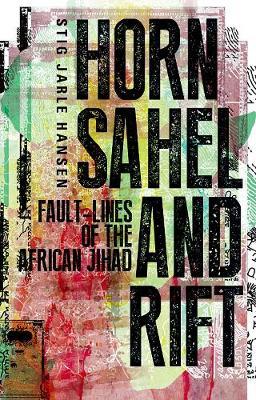Horn, Sahel and Rift

Horn, Sahel and Rift
This book explains why the Idea of Jihad is alive and well in sub-Saharan Africa, even after more than thirty years of Western and global efforts to curtail it, and how most important organisations are formed by the interaction between the often under-estimated local and global dynamics.
Stig Jarle Hansen has been researching African radical violent Islamism for more than fifteen years and is well placed to explain how and why such groups emerged, whether they manifest any specific traits compared with other violent Islamists, and what is likely to be their impact beyond the African continent. He also discusses the response of African and Western governments to this phenomenon
cks against US embassies in Nairobi and Dar-es-Salaam attest to al-Qaeda's durable presence in Africa, yet Islamist-inspired radical organizations in the continent have gained much attention of late, the result of their campaigns of insurgent and terrorist violence directed against the state in Algeria, Somalia, Nigeria, Mali and Kenya. These groups include Al-Qaeda in the Islamic Maghreb, Harakat Al Shabaab, Boko Haram, the Movement for Oneness and Jihad in West Africa and Ansar Dine. Evidence has emerged to suggest that beyond shared political objectives they are also collaborating in terms of finance, propaganda, arms transfers and training, while Western governments believe some of them maintain links with Al-Qaeda "central." Stig Jarle Hansen has been researching African radical violent Islamism for more than ten years and is well placed to explain how and why such groups emerged, whether they manifest any specific traits compared with other violent Islamists, and what is likely to be their impact beyond the African continent. He also discusses the response of African and Western governments to this phenomenon.
PRP: 252.00 Lei
Acesta este Pretul Recomandat de Producator. Pretul de vanzare al produsului este afisat mai jos.
226.80Lei
226.80Lei
252.00 LeiLivrare in 2-4 saptamani
Descrierea produsului
This book explains why the Idea of Jihad is alive and well in sub-Saharan Africa, even after more than thirty years of Western and global efforts to curtail it, and how most important organisations are formed by the interaction between the often under-estimated local and global dynamics.
Stig Jarle Hansen has been researching African radical violent Islamism for more than fifteen years and is well placed to explain how and why such groups emerged, whether they manifest any specific traits compared with other violent Islamists, and what is likely to be their impact beyond the African continent. He also discusses the response of African and Western governments to this phenomenon
cks against US embassies in Nairobi and Dar-es-Salaam attest to al-Qaeda's durable presence in Africa, yet Islamist-inspired radical organizations in the continent have gained much attention of late, the result of their campaigns of insurgent and terrorist violence directed against the state in Algeria, Somalia, Nigeria, Mali and Kenya. These groups include Al-Qaeda in the Islamic Maghreb, Harakat Al Shabaab, Boko Haram, the Movement for Oneness and Jihad in West Africa and Ansar Dine. Evidence has emerged to suggest that beyond shared political objectives they are also collaborating in terms of finance, propaganda, arms transfers and training, while Western governments believe some of them maintain links with Al-Qaeda "central." Stig Jarle Hansen has been researching African radical violent Islamism for more than ten years and is well placed to explain how and why such groups emerged, whether they manifest any specific traits compared with other violent Islamists, and what is likely to be their impact beyond the African continent. He also discusses the response of African and Western governments to this phenomenon.
Detaliile produsului









